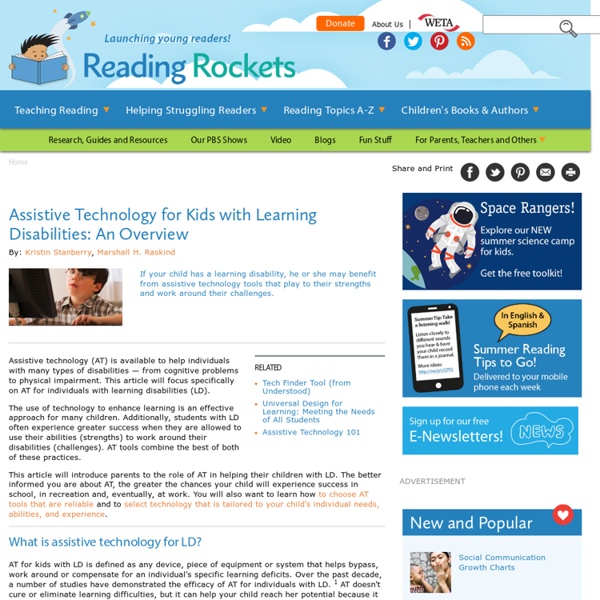Assistive Technology for Kids with Learning Disabilities: An Overview

http://www.readingrockets.org/article/assistive-technology-kids-learning-disabilities-overview
10 Benefits of Technology in the Classroom - Centre Technologies
Technology in the classroom used to involve playing Oregon Trail on one of the four available PC’s in the “computer lab.” The 21st Century has made great strides since then, and children today have unprecedented technology tools at their disposal. Despite the positive trends towards adopting technology in the classroom, the full menu of technology is still not universally available to all students. Many schools struggle with nearly-crippling budget cuts and teacher shortages, and some have had to make difficult choices. Using technology at school has become an important talking point across all campuses from K-12, an on through higher education.
Learning Technologies: Information for Teachers - Home
Stopping the Tech Diversity Gap Where It Starts: Elementary School
As technology advances, it redefines the skills needed to succeed. To meet this new standard, we must change what and how we teach our students, and in the process, ready them for jobs we could never dream of having. Currently, that means redefining the “fundamentals” of a public education. While reading, writing and math skills will always be fundamental, so now is computer science. More and more of the high-paying, high-tech jobs coming to economic hubs like Atlanta are requiring a deep understanding of computers: not just how to use them, but how to communicate with them. How to identify a problem and code a solution that a computer will understand.
Related:
Technology Benefits for Diverse Classroom
Related:




Technology has come a long ways in improving the education of students with learning disabilities. Technology is making it possible for these students to reach their full potential and giving them confidence in school. This stuff is amazing in my opinion. by rshanklin Feb 13